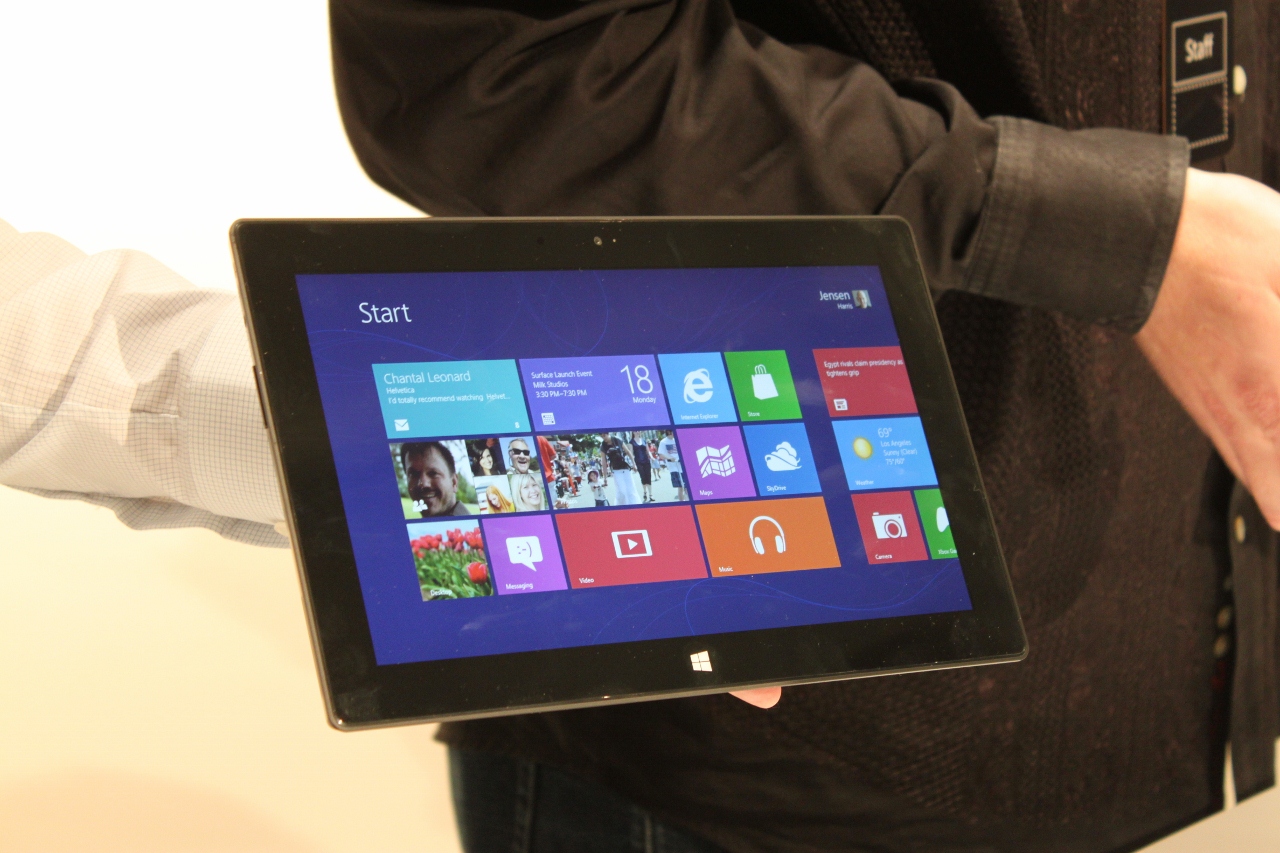Microsoft: Tablets Will Outsell Desktop PCs in 2013
Microsoft said tablets will outsell desktop PCs in 2013, partially thanks to Windows 8 devices.
During TechEd Europe in Amsterdam, Microsoft’s vice president for Windows Web Services, Antoine Leblond, said that 2013 will be the year tablets outsell desktop PCs. Yet on the other hand, he said touch is coming to the PC in a big way, and that it will change the way user interfaces are designed "very dramatically." In fact, touch will alter the way we use our desktops much like the mouse originally did back in the 1960s.
Naturally Leblond was out promoting the upcoming launch of Microsoft's touchy Windows 8 operating system. Just last week, the company revealed its own branded Windows 8 (hybrid) tablet featuring a super-thin keyboard that also serves as a cover. It will arrive in two flavors: x86-based featuring Windows 8 Pro, and ARM-based sporting Windows RT.
However his 2013 prediction is an obvious one. In addition to Microsoft's own tablet plans, hardware partners are scheduled to sell Windows 8 tablets at launch and thereafter. Meanwhile, Apple is rumored to launch its own 7-inch iPad Mini later this fall and likely the iPad 4 in the first half of 2013. Google is launching its own branded Android tablet with the Asus Nexus 7 while the second-generation Kindle Fire is scheduled to make an appearance next month, all leading to a rise in tablet sales in 2013.
Yet despite recent complaints from Windows 8 users regarding navigation on a desktop using the standard mouse and keyboard, Leblond insists that the new Metro design works equally well on a desktop or a tablet. He proved this by allowing colleagues to demonstrate a variety of keyboard shortcuts to navigate the Metro Start menu. He said users can also switch between the Metro style apps and traditional x86 software.
"You don’t have to choose between a small, thin and light tablet and the apps you rely on," he said. "You don’t have to choose between the device you want and the device you’re allowed to use at work."
PC Pro reports that he also demonstrated Windows To Go. This allows employees to run a locked-down installation of Windows 8 on a Windows 7 PC. This is done by simply plugging in a USB drive, thus allowing companies to give employees access to corporate applications without the security risks of running it on their own hardware.
Get Tom's Hardware's best news and in-depth reviews, straight to your inbox.

Kevin Parrish has over a decade of experience as a writer, editor, and product tester. His work focused on computer hardware, networking equipment, smartphones, tablets, gaming consoles, and other internet-connected devices. His work has appeared in Tom's Hardware, Tom's Guide, Maximum PC, Digital Trends, Android Authority, How-To Geek, Lifewire, and others.
